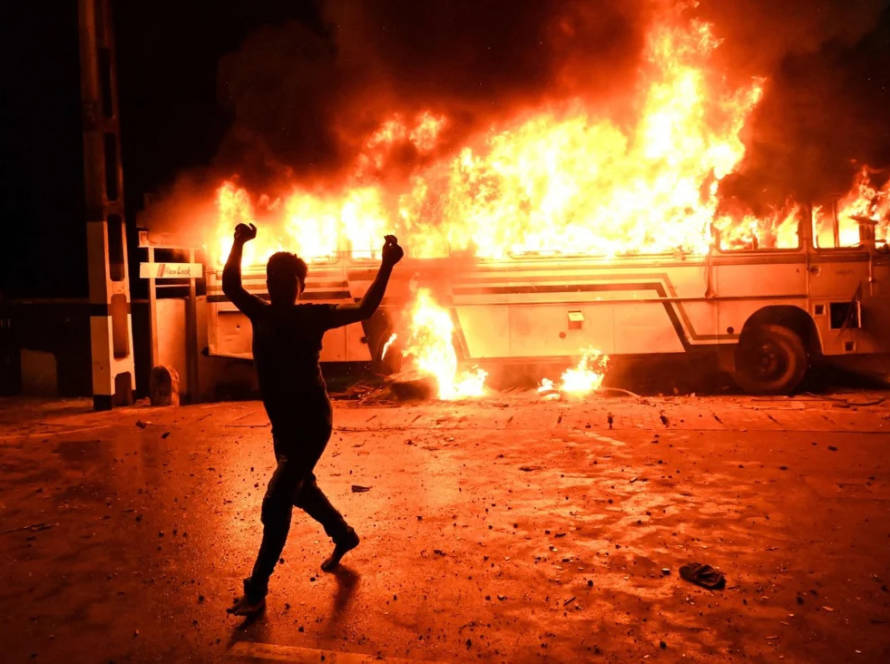By Vinod Moonesinghe
Some years before Russia’s Ukraine “Special Military Operation”, the US Army’s Quadrennial Defence Review Office sponsored a study by the RAND Corporation of strategies to “extend Russia.” RAND published its findings in a 2019 report, Extending Russia: Competing from Advantageous Ground.
The RAND Corporation, a private research organisation providing analysis and research to inform policy decisions in national security, international affairs, and other fields, uses applied science, operational research, and policy analysis to translate theoretical concepts from formal economics and physical sciences into applications in other areas.
After the Second World War, discussions by the US War Department with the Office of Scientific Research and Development and the weapons industry, on bridging the gap between operational research and decision-making, gave birth to RAND (from “research and development”).
It gained a reputation for expertise in strategic planning and defence analysis, as well as notoriety for its involvement in controversies over the Cold War, possible nuclear conflict, the Vietnam War, and the Iraq War. Its genesis and sources of funding, including the US government and corporations, make it the handmaiden of the US military-industrial complex, especially since its recommendations tend to get adopted as policy.
Extending Russia based itself on an analysis of Russian anxieties and vulnerabilities, building on the concept of long-term strategic competition, partly originating from RAND during the Cold War. In a seminal 1972 report, RAND proposed that the US should switch from trying to surpass the Soviet Union in all dimensions to controlling the competition to gain a strategic advantage which would cause the Soviet Union to expend its limited resources in areas posing a lesser threat to the US.
The report posits that Russia faces economic stagnation due to its dependence on natural resource exports and economic sanctions, causing living standards to decline. Moscow has deep-seated anxieties about the possibility of Western-inspired regime change, loss of great-power status, and military attack.
Still a powerful peer competitor of the US in some key domains, Moscow is increasingly authoritarian, with no real alternative to the personalised rule of Vladimir Putin, who eyes restoring Russia’s global influence. Having gained economic strength, international weight, and greater military capabilities than any country with similar defence spending, Russia can exert its influence over its immediate neighbours and threaten the US and its allies through means short of conventional conflict.
Based on this analysis, RAND drew on a panel of experts to formulate a series of utilisable options, and assessed the costs, risks, and chances of success. The report suggested that the US could exploit Russia’s vulnerabilities and anxieties through nonviolent measures, to unbalance it adversary and cause it to overextend itself militarily or economically, or to lose domestic and/or international prestige and influence. It claimed that these steps form a part of a larger strategy to destabilise Russia and prompt it to compete in domains or regions where the United States has the upper hand.
Extending Russia focused on cost-imposing measures in six areas: economic, geopolitical, ideological and informational, air and space, maritime, and land and multidomain.
In the economic realm, it examined expanding US energy production, imposing deeper trade and financial sanctions, increasing Europe’s non-Russian gas imports and encouraging the flight of Russian skilled labour and educated youth – deeming the last ineffective.
In the geopolitical sphere, it considered providing lethal aid to Ukraine the most likely to succeed, with low probability of success for increasing support to Syrian rebels, regime change in Belarus, expanding ties in the South Caucasus, and reducing Russian influence in Central Asia. It rejected “flipping” Transnistria as counter-productive.
In the arena of ideology and information, it found low probabilities of success in diminishing faith in the Russian electoral system, creating the perception that the state did not pursue the public interest, encouraging domestic protests, and undermining Russia’s overseas image. However, these “would prey on the Russian regime’s deepest anxieties and might be employed as a deterrent threat to diminish Russia’s active disinformation and subversion campaigns abroad.”
In the aerospace sphere, “reposturing” bombers within easy striking range of Russian strategic targets and deploying additional tactical nuclear weapons would probably be successful, while Russia could easily turn to its advantage repositioning fighters and ballistic missile defence systems closer to their targets. Russian anxieties about U.S. airpower capabilities and doctrines might cause worry about a US focus on developing or producing more stealth bombers, drones and longer-range high-speed anti-radiation missiles (HARMS) or developing new electronic warfare technology.
Focusing on space or breaking nuclear arms treaties would have little chance of success, given Russian superiority in these sectors. All available choices would probably motivate Moscow to allocate increasing resources towards enhancing the resilience, mobility, and redundancy of its command-and-control systems, and an arms race would cost the US more than the benefits.
Extending Russia found that all maritime options had high costs and low chances of success. Increasing US and NATO land forces in Europe and escalating NATO exercises in Europe and on Russia’s borders would have less chance of success, breaking the Intermediate-Range Nuclear Forces Treaty would have higher chances. Investing in new capabilities to manipulate Russian risk perceptions would have mixed results.
The study concluded that the most effective options to “extend Russia” addressed its vulnerabilities, anxieties, and strengths. It recommended expanding US energy production, imposing deeper trade and financial sanctions, increasing US and allied naval force posture and presence, reposturing bombers, and investing more in autonomous or remotely piloted aircraft, long-range strike aircraft and missiles, longer-range HARMs and new electronic warfare technologies, as most effective.
Russia’s main vulnerability lay in its comparatively small and highly energy export-dependent economy, it had most anxiety about the stability of its regime, and military and information warfare capabilities constituted its strength. These options being escalatory, they could prompt Russian counter-escalation, so they should be carefully planned and calibrated to achieve the desired effect. Both Russia and the US would have to divert national resources from other purposes, so the options should be considered within the broader context of national policy based on defence and deterrence, and also co-operation (where interests align).
Extending Russia relied on qualitative judgments of the researchers rather than costing the measures quantitatively. This made the assessments vulnerable to value-judgement distortions, which may have led the US government to ignore several of the recommendations. Indeed, some measures presented by RAND had already begun implementation, such as encouraging domestic protests, undermining Russia’s overseas image, and providing lethal aid to Ukraine (the US had supplied USD 1.5 bn worth of military aid by 2019).
The US attempted some of the measures nixed by RAND, such as attempting regime-change in Belarus and reducing Russian influence in Central Asia, and they did turn out counter-productive, as the Russian position in both improved considerably. On the other hand, some of the recommended options they tried also failed, notably attempting to undermine the Russian economy.
This is because increasing sanctions benefitted the Russian economy, while boosting US energy output and shifting gas supplies to Europe away from Russia caused much damage to European economies, leading to growing anti-US sentiment. Investing more in drones led to Russia increasing its own drone capability and US nemesis Iran becoming a “drone superpower.”
Indeed, the entire strategy of over-extending and unbalancing Russia may be flawed. Without fear of an aggressive NATO extending itself to its frontier, including attempting to push up to its southern flank in West and Central Asia, Russia might never have launched its Special Military Operation. In 2015, Brookings Institute analyst Jeremy Shapiro (now the European Council on Foreign Relations’ research director) suggested that “if U.S.-provided weapons fail to induce a Russian retreat in Ukraine and instead cause an escalation of the war”, the result could be humiliating for the US.
This brings into question the entire US (and thereby Western) strategy vis-à-vis Russia. Declassified documents posted online in December 2017, confirmed that Western leaders had given assurances to Soviet officials in 1990 and 1991, that NATO would “not move one inch to the east” – a promise observed only in the breach.
In 2000 Putin wanted to join NATO. In 2019, current CIA supremo William J. Burns admitted that the US had rejected Putin’s offer of a partnership to fight Al Qaeda: “The Bush administration… had little inclination to concede much to a declining power.” Misreading geopolitical trends, the US chose hostility over co-operation, and today the Ukrainian people suffer the consequences.
The US’s “overextending and unbalancing” chickens have come home to roost, as demonstrated by the White House’s petulant reaction to Chinese leader Xi Jinping’s call for a ceasefire in Ukraine, during his meeting with Putin. Following closely on the rapprochement he brokered between Iran and Saudi Arabia, Xi’s ceasefire call echoed the war-weariness of the non-Western world, and portrays China as the global peacemaker. The US tantrum in response brought into question its role in obstructing a solution to the central issue of the Ukraine conflict – Russian insecurity about an aggressive NATO stationing armed forces, including nuclear weapons, on its borders.
Recent aggressive sanctions and other actions against China over Taiwan – which the US has recognised as part of China for over 50 years – and the South China Sea, subversion of countries such as Syria and Thailand, causing harm even to its allies (a good example would be the Nord-stream pipeline sabotage) have damaged the image of the US. It is seen more as an underworld protection agent than as the “global policeman.” Its behaviour regarding the Ukraine, especially in connection with Xi’s ceasefire call, is merely the last nail in the coffin of its good reputation.
Vinod Moonesinghe read mechanical engineering at the University of Westminster, and worked in Sri Lanka in the tea machinery and motor spares industries, as well as the railways. He later turned to journalism and writing history. He served as chair of the Board of Governors of the Ceylon German Technical Training Institute.
Factum is an Asia Pacific-focused think tank on International Relations, Tech Cooperation and Strategic Communications accessible via www.factum.lk.
The views expressed here are the author’s own and do not necessarily reflect the organization’s.


